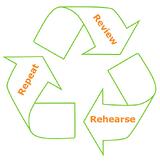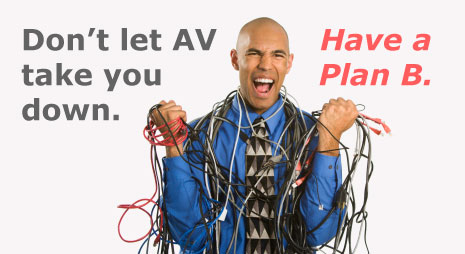Personal Preparation
High tech companies must be adept at preparing and presenting scientific talks. Beyond conveying technical content, these presentations must engender confidence within your customers, partners, and investors. In our previous post we shared six methods for preparing the content of a good scientific presentation. In this article we will share five things you can do to prepare yourself.
Presentations can be challenging for scientists and engineers. These individuals feel most at home in the lab or on the shop floor and prefer one-on-one interactions to speaking in front of a crowd. However, their expertise brings considerable value to a presentation and often makes them uniquely suited to give the talk themselves. We're offering these tips to help engineers convey greater confidence as well as knowledge during presentations.
Review, Rehearse, Repeat.
 You can never be too familiar with your material. Review the content of your slides over and over, looking for ways to improve clarity by altering, eliminating, or rearranging content. Streamlining the talk will drill the content into your head.
You can never be too familiar with your material. Review the content of your slides over and over, looking for ways to improve clarity by altering, eliminating, or rearranging content. Streamlining the talk will drill the content into your head.
As you refine the talk, make notes of the points you need to make for each slide and memorize those points. If it helps, write yourself an outline or a script, but rehearse it until you can give the presentation without constantly referring to your notes. Once you know the prep style that works best for you, it will be easier to follow it for future presentations.
Test the presentation system before your talk.
Public speaking is stressful enough without battling technical difficulties in front of an audience. Always travel with a set of standard cable convertors for your computer (HDMI, VGA, DVI, etc.), rather than relying on your host. For extra peace of mind, also save a backup of your presentation onto a memory stick using a universal format such as PDF – you will be able to deliver a stripped-down version of your presentation on someone else’s computer if the worst happens.
Nothing’s worse than listening to a speaker apologize for technical difficulties. “If I had my slides, you’d see…” Worst case: just move on with your talk. —Michele Nichols, Launch Solutions President

Relax your throat.
 Stress creates physical changes in the vocal system. The larynx contracts, tightening the vocal chords; this raises the pitch and reduces the volume of the voice. Furthermore, the diaphragm muscles beneath the lungs constrict, reducing lung capacity. The net effect is that, without realizing it, human speech becomes higher pitched, quieter, and faster when we are nervous. You need to consciously compensate for those changes.
Stress creates physical changes in the vocal system. The larynx contracts, tightening the vocal chords; this raises the pitch and reduces the volume of the voice. Furthermore, the diaphragm muscles beneath the lungs constrict, reducing lung capacity. The net effect is that, without realizing it, human speech becomes higher pitched, quieter, and faster when we are nervous. You need to consciously compensate for those changes.
- First, breathe deeply. This serves two purposes – the increased lung capacity increases the volume of your voice, and it also gets extra oxygen into your bloodstream, relaxing you and your muscles.
- Next, enunciate carefully. This not only makes your speech clearer, but it also forces you to slow down, which, again, is relaxing.
- Finally, speak loudly, projecting your voice to audience members at the back of the room. The extra volume makes you easier to understand and conveys confidence. Women particularly should be conscious of projecting, as mic set-ups are usually made for men’s shirts.
Let your personality come through.
There’s a reason we still give presentations in person. A computer could click through your slides while playing an audio track. It would be technically perfect, but it would not be as effective. People simply prefer watching people. The common advice might be to “just be yourself,” but that is actually quite difficult in front of an audience. Instead, focus on making yourself comfortable. Wear clothes you love – clothes that make you feel professional without being constrictive.
Let yourself get excited as you speak. Make eye contact. Smile. Enthusiasm and energy are more important than perfection. Moving around also helps to calm your nerves and keep people engaged. Once you’re out from behind the podium, the audience is yours.

Remember that the audience is on your side.
Your audience wants you to succeed. They chose to listen to you. In a technical presentation, they expect expertise, not a flawless performance. Talk to them as if they were your friends. Pick a couple of faces in the audience, and talk directly to them. Just be sure to move your attention around.
When questions arise during or after the talk, know that those inquiries are coming from a place of curiosity, not conflict. If you project an amicable demeanor throughout your presentation, the audience will reflect that friendliness back at you.

Conclusion
Worry is a waste of mental energy. Everyone gets nervous, but adequate preparation and practice will minimize your concern for content and technical issues. Channel that nervous energy into excitement for your subject while taking steps to make yourself physically and mentally comfortable in the room. Following the steps described above will make you seem relaxed and in-control while you speak, even if your knees are shaking a bit.

